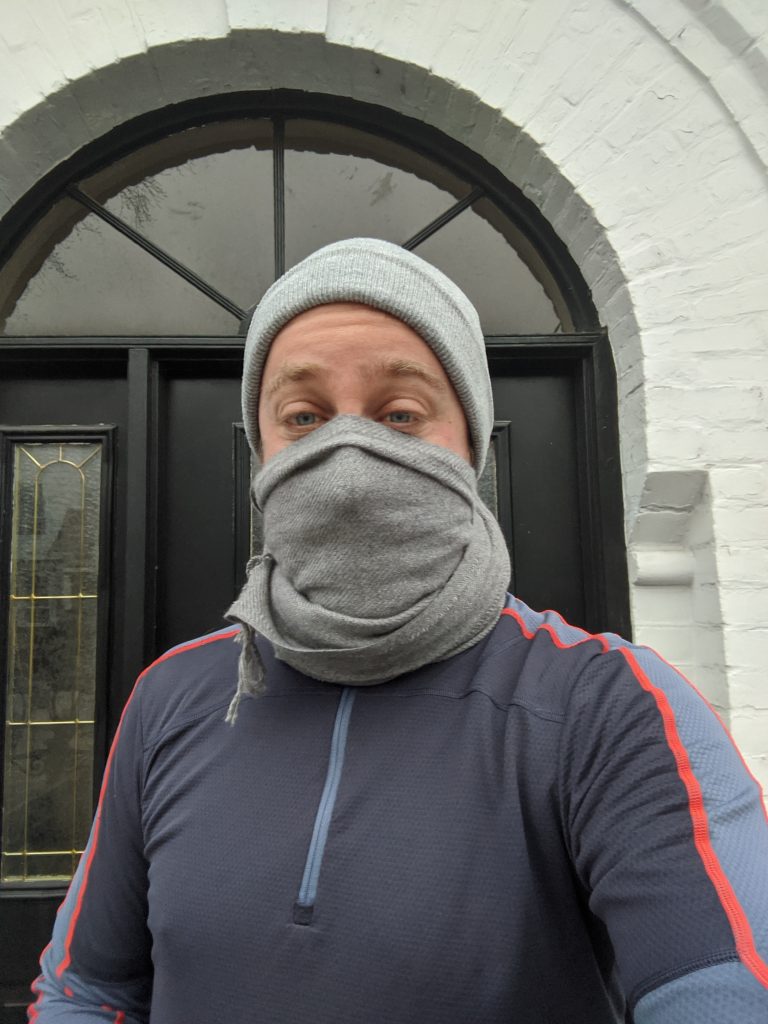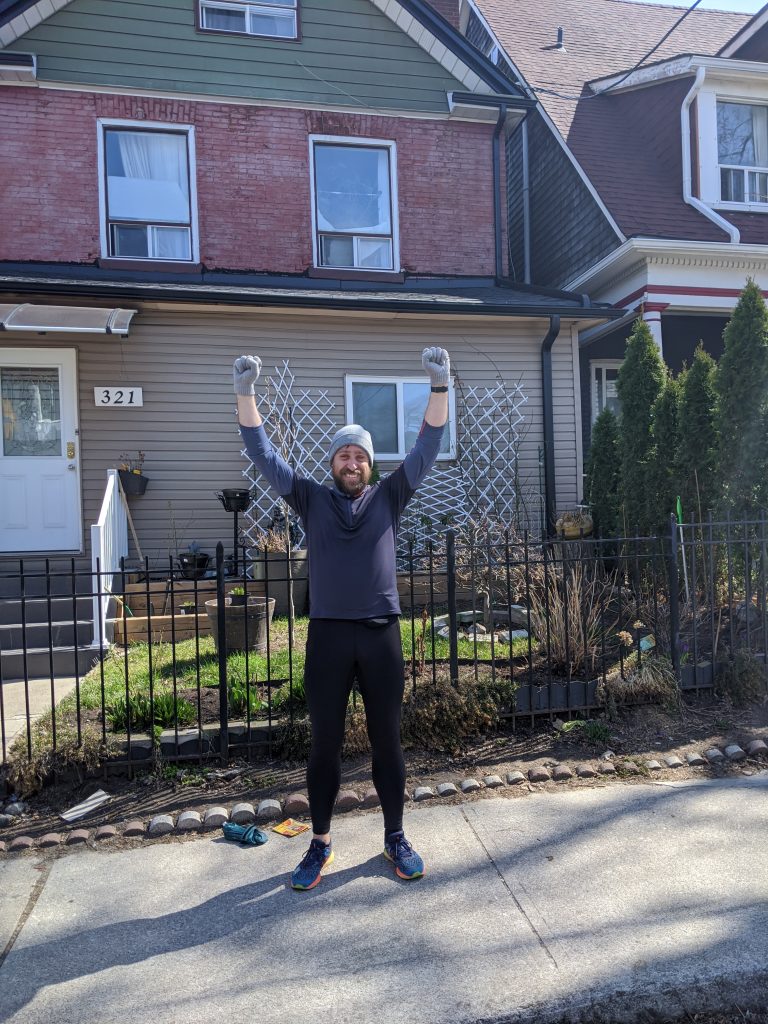So you’ve got your shirt, shorts, water bottle, and the right running shoes. Now it’s time to run. Should be easy, right? But maybe it’s starting to rain, and you think to yourself, “not today, maybe tomorrow.” Or a friend calls you and you figure it’d be rude to blow them off. The trouble is, you’ve been finding a different reason to not run each day for the past week. And before you know it, the idea of going out for a run is becoming overwhelming instead of motivating.
“The biggest battle isn’t running, it’s leaving your home because once you’re out the door, you’re going,” says Anoke Dunston, Educator at Lululemon in Toronto. The good news is that you’re not alone in this “battle.” We’re here to help. Continuing along in iRun’s series dedicated to helping new runners feel more supported, we’re looking at ways you can get over common mental hurdles and out of the door running. Here are some tips from pro runners, who were once also in your (running) shoes.
Lay your clothes out
One of the best things you can do is to lay out your running clothes the night before a run. This cuts down on time and excuses the next morning when you’re getting ready for your run and want to keep your motivation up. The less time you spend scrambling around trying to find everything you need, the less stressed you are. Getting ready the night before will also give you more time to get the critical sleep you need, aim for eight hours for optimal performance. When you do some quick prep the night before, your future self will thank you.

Find a friend to run with
Sometimes finding the motivation to run is hard on your own, and many runners find that it really helps to have someone to run with, especially when starting out. You’ll be there to encourage each other when you’re not so thrilled to run—a very common feeling at the beginning of your running journey! “Personally, I think it’s easier to buddy up with someone. The accountability you have with someone else running makes it a lot more fun. It’s more of a social experience than exercise, and before you know it—you’ve run 5K, 10K, 20K, and even 30K sometimes,” says Dunston.
If you have a friend who’s been wanting to start running as well, the two of you can partner up for accountability. Or, you can find a running partner through apps like Jogging Buddy. If you aren’t able to find a friend or partner who’s interested in running consistently, you can also look for a running crew in your city. A good place to start looking is apps like Strava, where running crews often post their activities. Usually, running crews run one to two set times a week, which can help you build a steady running schedule, plus you’ll meet people there to keep you accountable.
Gamify running
Something you’ll hear a lot of once you start running is the idea that building endurance can be more of a mental exercise than a physical one. One way to help overcome some of the mental blocks that might arise as you try to increase your distance or speed, is by turning your run into a series of fun or easy goals. “I sometimes count intersections to break up my run to trick myself into thinking that my run won’t be that long. If I have to run 10K, I focus on running intersection to intersection because it’s the small battles won on a run that make it easier to reach a loftier goal,” says Dunston.
Another way of making your run more fun is by literally turning it into a game. Running apps like Zombies Run! and The Tetradome Run are a perfect way to kickstart and gamify your running experience. Each of these apps motivates you with audio-based challenges that cast you as the protagonist of a story and which increase in difficulty with each run.
Explore New Places
Part of what makes running so exciting is that it gives you an excuse to discover new parts of the town or city where you live. For those who don’t want to have the Groundhog Day experience of running the same route over and over again, try switching it up and planning a new route each time you run to make it more of an exploration. “Something I do is a ‘Run To Paradise,’ where I live in East Scarborough [in Toronto]. I set a destination I run to, whether it’s the Bluffs, Woodbine Beach, or even a grocery store. Setting these destinations for myself helped me so much because it made running fun,” says Dunston.
You can plan out your routes by length using online tools like Strava’s Route Builder and PlotARoute.

Embrace the run-walk regiment
There’s nothing that says you need to be running for ten straight kilometres right out of the gate. In fact, running for long distances without breaks is unhealthy for a beginner runner. Breaking up your run by designating time or distance milestones to take walking breaks (for example every five minutes or every two kilometres) helps your body acclimate to using new muscles and gives you some much needed mental and physical resting periods.
“The run-walk method can help improve speed and recovery while decreasing the chances of injury,” says Armen Ghazaraians, CEO of California-based Finish Fit. “When done correctly, the run-walk method can help improve running fitness, aerobic capacity, and overall recovery.”
One last piece of advice: Although running is a great way to keep physically fit, don’t forget all the mental health benefits that you’ll get from your runs! “I listened on a podcast once that we, as humans, tend to take care of what’s below our neck rather than what’s above it. Running helps me clear my mind, think things out, and bring me back to balance,” says Dunston.
Still looking for inspiration to finally pick up those running shoes? We reached out to athletes on Strava to get their advice for new runners, here’s what they had to say…
“Find out what inspires you about running, what helps: music, podcast, route, city, rural, trail, treadmill, people, friends, club, social, alone, solitude, beating a time, target race, training plan and create a consistent experience that you enjoy. You have to do it for yourself; otherwise, you’ll likely give it up. People get hung up on external factors, comparing and ego, but I always say that “2 shoes + out the door = running”, and it is no more complicated than that.” – P. Smith
“I would say keeping the mileage low and involving friends. It is fun to share your runs on social or even start a running crew to keep it fun and add accountability.” – L. Armstrong
“Personally, I see running as a community. Consistency in my experience has a lot to do with having fun, a goal, and a community that shares working towards that goal. I agree that there is an element of competitiveness amongst runners that can intimidate new runners that could push them away. Patience and persistence, I believe, are needed if a goal is what is driving you to run.” – C. Costa
“Keep putting one foot in front of the other. Take it easy. The first few weeks will be tough, but then you will start to notice the improvements. Different people are motivated differently. Some just run for fun, others to race, and others just to race against themselves. Find what motivates you!” – G. Stanley
“Run/Walk starting out and then again when increasing mileage. Running friends/group.” – R. Mann
“A training log is a great visual to help with accountability. I found Strava to be a good tool coming back postnatal. It’s fun to share your journey with others.” – G. McCabe
“Don’t overcommit: set reasonable goals, start easy, build up foundation over time.” – A. Yatsynych
“Do yoga… running is so stressful on joints so make sure your style is right to limit negative impact, so do running ABCs. Run on grass, off road to avoid stress from pavement pounding.” – D. Anderson
“Sign up for upcoming runs (or virtual runs) to give yourself goals that keep you motivated! :)” – E. Ciente
“For me it was reaching out to experienced running friends for their guidance and support. Setting expectations low and building on them slowly. Celebrating small milestones and any little bit of progress. I started running for half an hour a couple times a week. I’m really slow but I feel great during and afterwards and I can tell I’m gradually getting stronger. Committing to other leg strengthening exercises (squats, lunges, yoga) has helped reduce pain and risk of joint injury.” – Z. Foster






 Our Magazine
Our Magazine
